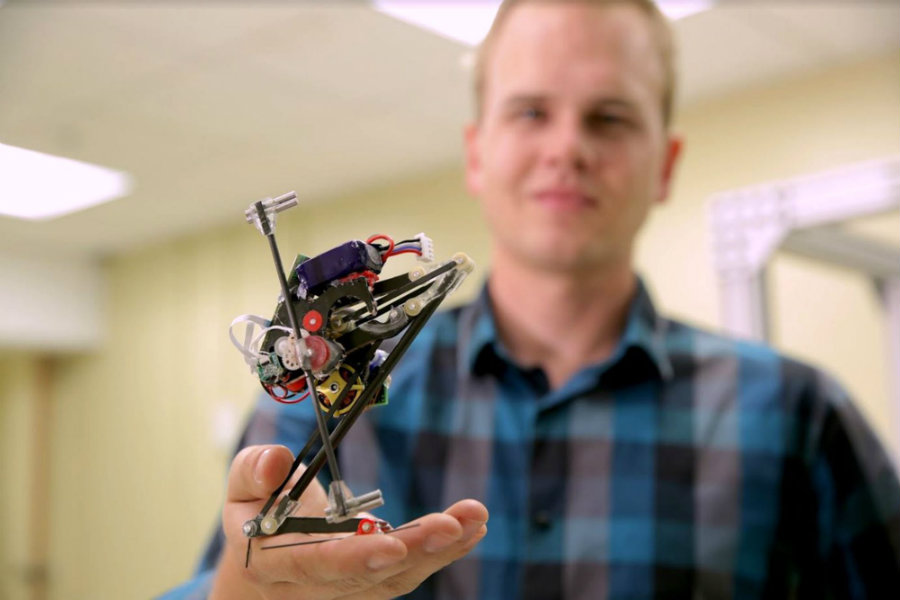Salto, or “Saltatorial Locomotion on Terrain Obstacles,” is UC Berkeley’s small monkey-inspired robot, based on a measure of vertical agility that comprehends the height something can reach with a single jump under Earth’s gravity.
Salto was inspired on the galago, a small monkey able to use its tendons alongside its muscles to reach absurd jump heights. The galago can jump five times in four seconds, reaching a combined height of 27.9 feet.

Salto can jump 1.75 meters per second, in comparison with the bullfrog that jumps 1.71 meters per second and the galago an astounding 2.24 meters per second.
Salto can jump just after it lands thanks to its motor-driven spring system, which resembles the galago’s crouching stance to reach unprecedented heights. The robot weighs only 100 grams or 3.5 ounces and is 10.2 inches tall with its legs fully extended. On a single jump, Salto could reach over 3 feet high. Project participants recognized that other robots can jump higher than Salto in a single leap, such as TAUB, a robot inspired in a locust that can reach over 10 feet in a single jump.
The miniature robot is expected to take part in rescue missions, as it should be able to be paired with sensors to detect people in piles of debris, able to pass through small crevices without disturbing the rubble and causing a collapse that could be dangerous for the person to rescue.
One of the most impressive steps in building Salto was creating a new measurement that let scientists compare the vertical agility of robots and animals alike:
“Developing a metric to easily measure vertical agility was key to Salto’s design because it allowed us to rank animals by their jumping agility and then identify a species for inspiration,” stated project leader Duncan Haldane, Ph.D.
From parkour to robotics
The study was published in the journal Science Robotics, where roboticists admitted having been inspired by people who practice parkour as they latch themselves on walls, railings and so on. They also name mountain goats and arboreal animals as interesting examples of vertical agility, highlighting the ability to jump as the main contributor to a larger threshold of footholds.
The goal was to try and achieve what the galago could do, which is to use 15 times more power than what its muscles are capable of by taking mechanical advantage from its tendons.
“A low mechanical advantage (MA) means that the muscle can apply a high force (which stores energy in the elastic tendon), with low ground contact force, preventing the large upward acceleration that would otherwise result. Animals with pronounced degrees of power modulation have an MA profile that starts low to store energy and then increases throughout the stroke, rapidly releasing energy for high-power jumps,” the study reads.
Implementing robots with series-elastic actuators and mechanical advantage would allow them to surpass their kinetic limitations, allowing for more efficient robots that can help save human lives, or perhaps conduct dangerous military operations.
Source: Berkeley
